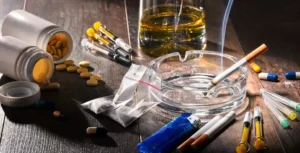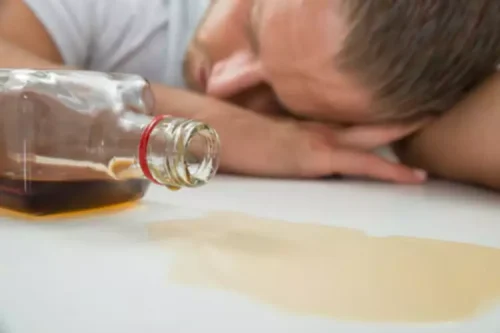
Anyone seeking specific orthopaedic advice or assistance should consult his or her orthopaedic surgeon, or locate one in your area through the AAOS Find an Orthopaedist program on this website. VKA achieve their anticoagulant effect by interfering with several coagulative factors like II, V, VII, and IX. Their metabolism is significantly affected by substances acting on cytochrome (CYP) P450. VKA require periodic INR control and have a delayed and prolonged effect that lasts even after suspension.
Human growth hormone
Whatever the case, it’s clear that positive drug tests are much more prevalent in today’s sports than they were even ten years ago. The professional leagues’ approaches to their substance abuse programs vary as well. In the NFL, upon testing positive for a banned PED, the player is notified and the sample (which is split in half during the original phase of testing) is re-tested. Mandatory physical examinations are conducted to rule out naturally occurring high levels of chemicals (such as testosterone), and psychological examinations may also be conducted in case of suspected addition. PEDs have potential not only for direct medical consequences but also for exacerbating other conditions.
Effects of Performance-Enhancing Drugs
He was wearing this fly fishing vest and he reached into one of the pockets and he pulled out this little red, egg-shaped capsule. It’s common for athletes who exercise for long amounts of time to use a lab-made type of erythropoietin called epoetin. Learn more about the effects that performance-enhancing drugs can have on health. The pressure to win leads some athletes to use drugs that might give them an edge. At the college level, organizations such as the National Collegiate Athletic Association60 and individual member institutions conduct standard drug testing programs and enforce penalties for positive tests.

What should I do if I need to take medicine for a health reason?
As noted above, online doping forums may be seen as a form of user-led, ‘grassroots’ harm reduction communities, although such venues may focus on the maximisation of physical or performance benefits. Moreover, the very nature of the doping risk environments may limit the ability of individuals to effect harm reduction through mere behavioural change. People who use drugs seeking advice from recreational drug forums such as Bluelight or Erowid encounter similar barriers to safer consumption – a digital network of geographically-disconnected and anonymous individuals can do little to ensure safe supplies, while their expertise may be restricted to personal experience. One model has called for a partial change to anti-doping by relaxing current rules to allow for harm reduction to be introduced.

Performance-enhancing drugs in athletics: Research roundup
Because of the risks that accompany doping revelations and the secretive nature of such systems, athletes had little recourse that did not necessarily out them as dopers or threaten their livelihoods, safety, or reputations. Much like individuals who are victimized as part of their use or sale of other controlled substances, doping athletes lack ‘access to law,’ an absence posited to fuel the apparently violent ‘nature’ of illicit https://ecosoberhouse.com/article/dealing-with-internal-and-external-relapse-triggers/ drug markets at large (Jacques, Rosenfeld, Wright, & van Gemert, 2016). Even as the systematic approach to doping did enable use and reduce multiple types of harms, it was unable to reduce all risks. These persistent social harms were able to flourish due to the competing risk derived from the anti-doping environment. Without the threat of exposure and accompanying harms, athletes may have been able to avoid some of these abuses.
The use of Performance-enhancing Drugs (PEDs) may have long- and short-term impacts on the athlete’s physical and mental health. Depending on the substance, the dosage and the duration of use, some PEDs have been negative effects of drugs in sport proven to have severe side effects and can cause irreversible damage to an athlete’s body. The U.S. Anti-Doping Agency (USADA) has outlined the negative impacts of several doping substances on their website.

Athletes are held to a standard they are expected to follow and live up to. That stress put on many student athletes can lead to them turning to drugs, which open the doors to many negative effects. Athletic life may lead to drug abuse for a number of reasons, including for performance enhancement, to self-treat otherwise untreated mental illness and to deal with stressors, such as pressure to perform, injuries, physical pain and retirement from sport. The members of the diuretic class of drugs vary greatly in structure, physicochemical properties and site and mechanism of action. In the 1990s the analysis of diuretics in doping (by LC-UV or GC/MS) was a challenge for anti-doping laboratories due to the heterogeneity of the substances included.
Why is Substance Abuse Common Among Athletes?
Glucocorticoids are sometimes used by athletes in an attempt to enhance performance because of their anti-inflammatory and analgesic properties.12 However, there is minimal research to show any performance benefits of this class of drugs. An Anti-Doping Rule Violation (ADRV) will have an impact on an athlete’s ability to train and compete. For coaches and other Athlete Support Personnel, a ban may mean that they are no longer able to practice their profession and work with athletes.
- Athletes who use supplements often have no knowledge regarding their effects on sports performance and overall health.
- Recently however, due to the heterogeneity of the chemical structures and physicochemical properties of diuretics and the advent of more economical instrumentation, the use of liquid chromatography/MS (LC/MS) has become popular (Thevis and Schanzer, 2007).
- Future goals of diuretic analysis include developing more efficient and more economical detection methods.
- Although testosterone, stanazolol, and nandrolone were the AASs most frequently found in WADA’s tests of athletes, testosterone, boldenone, trenbolone, and nandrolone were the AAS most frequently found in nonathlete weightlifters (19).
- Even the cannabinoids can be justified in those dealing with terminal, painful conditions.
The prohibition of sport doping is thus constituted in relation to a desire to ensure the value and spirit of modern sport, building on an ideal view of sport in which winners are crowned due to honest excellence in performance and nothing else (Beamish & Ritchie, 2007). Consequently, it is taken for granted that the motives for doping in a sport context are connected mainly to performance enhancement, and so differ from use outside the sphere of modern sport. However, as Coomber (2014) has argued, perceptions and understandings of substance use in the sport and fitness world are directly related to those of substance use in the non-sport world. Doping substances and methods are those that will improve or enhance performance within sport or fitness contexts. Indeed, doping can be understood as a contextually specific substance use practice. Applying the heuristic developed by Rhodes (2002, 2009) to outline the factors and levels of environmental risk to the sport context illustrates several ways that sport and anti-doping policy create a risk environment that may produce doping behaviours (see Table 1).
